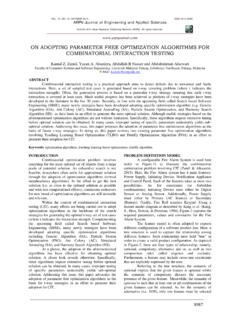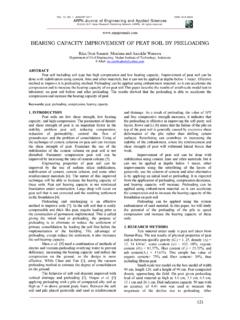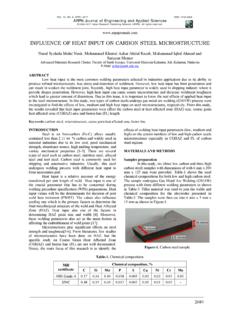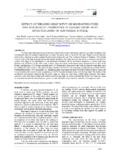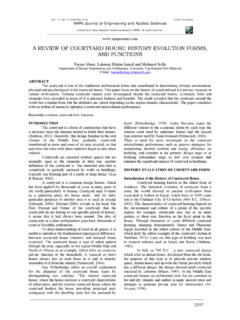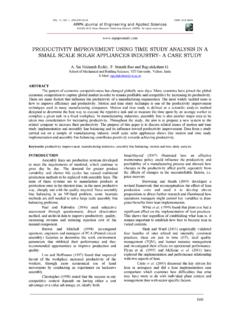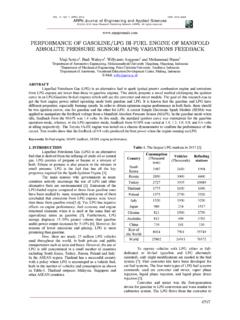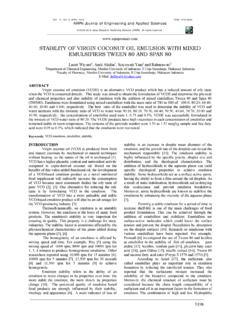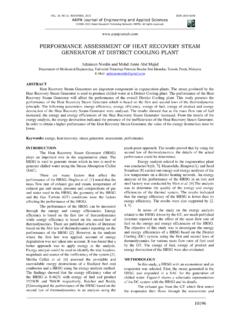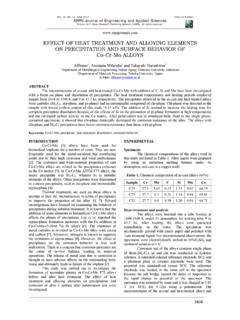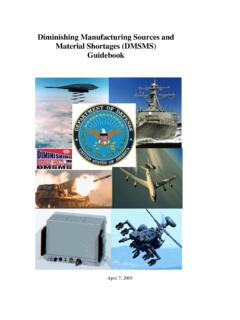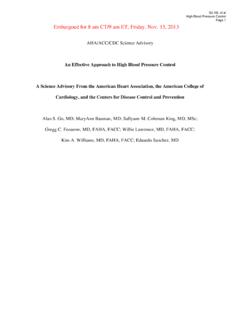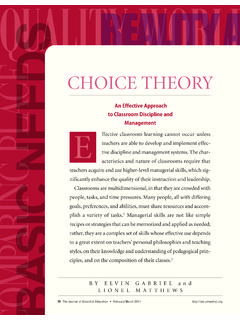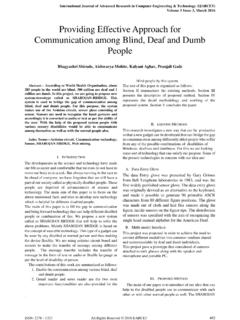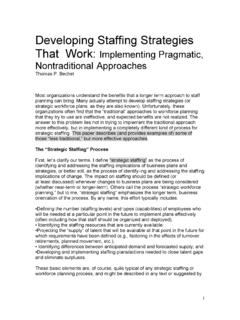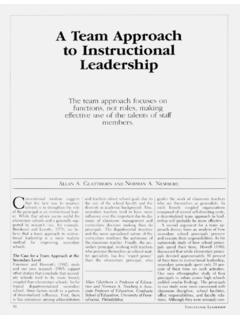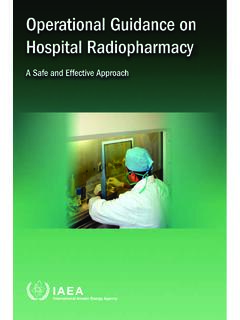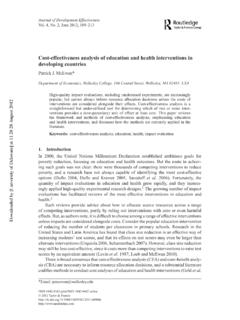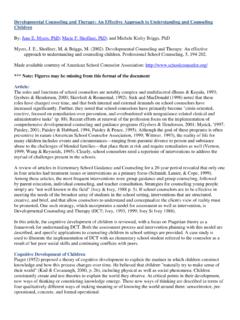Transcription of LEAN CONSTRUCTION: AN EFFECTIVE APPROACH FOR …
1 VOL. 11, NO. 3, FEBRUARY 2016 ISSN 1819-6608 ARPN Journal of Engineering and Applied Sciences 2006-2016 Asian Research Publishing Network (ARPN). All rights reserved. 1607 LEAN CONSTRUCTION: AN EFFECTIVE APPROACH FOR PROJECT MANAGEMENT Richard Hannis Ansah, Shahryar Sorooshian and Shariman Bin Mustafa Faculty of Industrial Management, Universiti Malaysia Pahang (UMP), Lebuhraya Tun Razak, Kuantan, Pahang, Malaysia E-Mail: ABSTRACT Projects have been considered as temporary based production systems which need to be designed, produced and delivered within a specified time.
2 It has been asserted by a number of researchers that fast, complex and uncertain projects cannot be managed through the conventional ways and that fast track projects with long, complicated supply chains involving many players and subject to multiple, extensive process design changes have complex flow management that have failed miserably. The conceptual models of construction management and the tools it utilizes (work breakdown structure, critical path method, and earned value management) have been criticized to be deficient in handling the present unique challenges of projects.
3 As a result, the industry is characterized by a number of wastes including: overproduction, lead time, transportation, inappropriate processing, inventories, unnecessary movements, rework and making do wastes. There is therefore the need for practical and robust models and techniques that will help projects teams deal with the issues of wastes in projects. This can only be achieved through the adoption of lean production systems in the construction industry, thus, Lean Construction (LC). In this paper, LC APPROACH and the importance for its implementation has been discussed as the robust APPROACH for project management.
4 Keywords: conventional models, lean construction, lean principles, lean production, wastes, project management. INTRODUCTION Projects have been considered as temporary based production systems which need to be designed, planned, produced and delivered within a specified time. It is asserted by a number of researchers that fast, complex and uncertain projects cannot be managed through the conventional ways and that fast track projects with long, complicated supply chains involving many players and subject to multiple, extensive process design changes have complex flow management that have failed miserably (Ballard and Howell, 1994).
5 As a result, the industry is characterized by delays and often has suffered cost and time overruns (Sorooshian, 2014). In general, a very high level of wastes/non-value added activities is confirmed to exist in the construction industry. Several studies from various countries have confirmed that, wastes in construction industry represent a relatively large percentage of production cost. The existences of significant number of wastes in the construction have depleted overall performance and productivity of the industry, and certain serious measures have to be taken to rectify the current situation (Aziz and Hafez, 2013).
6 It has been contended by the Lean Construction Institute (2014) that about 57% of productive time waste can be found in the construction industry. These wastes have been attributed to the inadequacies of the current projects management tools and the inabilities of the project teams to use robust and radical techniques to solve the challenges the industry faces. According to Johnston and Brennan (1996), Koskela (2000), Koskela and Howell (2001), Ballard and Howell (1994), the traditional approaches to construction or the conventional project management approaches have inadequacies in resolving the problems in the industry.
7 Nevertheless, lean manufacturing principles and techniques provide the foundations for minimization or total elimination of the waste faced by the industry. Lean construction has change the traditional view of labor flow and work flow reliability which were considered the most determinants of constructions works and has embraced the concept of flow and value generation. Basically, lean construction aims at reducing the wastes in workflow which the conventional methods are inadequate to eliminating them. This paper seeks to establish the fact that lean construction presents a new and robust APPROACH to dealing with the wastes in the construction industry which the current or conventional project management models have failed to control.
8 THE CONVENTIONAL PROJECT MANAGEMENT METHODS It is generally acknowledged that managements of projects must endeavor to achieve the goals of projects that were agreed upon before the start of the project. They must utilize and deploy tools, skills, techniques and available resources to facilitate projects to be able to complete projects on time. An EFFECTIVE and efficient project management will help meet and even exceed the expectations of the customer, they will maximize the use of available resources; be it time, money, people, space, among others, and endeavor for a successful completion of project within budget and on time; they will instill confidence in their team and also file what has been done for references in the future (Glenn, 2007).
9 However, according to (Abdelhamid, 2004), there have been VOL. 11, NO. 3, FEBRUARY 2016 ISSN 1819-6608 ARPN Journal of Engineering and Applied Sciences 2006-2016 Asian Research Publishing Network (ARPN). All rights reserved. 1608 observations and evidence that have indicated that, the models behind construction management and project management tools like; critical path method; work break down; and earned value management; have failed to complete project within budget, on time and the quality desired for the project.
10 The failures of current project management help define the requirements for a new APPROACH . This was echoed by (Koskela, 2000) who argued that, there is a mismatch between the conceptual models of project management and the reality observed. This highlight lack of robustness in the existing managements concepts and therefore calls for production theory in construction. This new APPROACH must rest on the expanded Transformation (T), Flow (F), and Value generation (V) foundation to optimize performance in projects. The responsibility of the project management team is to find or discover techniques for meeting and controlling schedule and budgets instead of outlining justifications or reasons for not meeting them.
